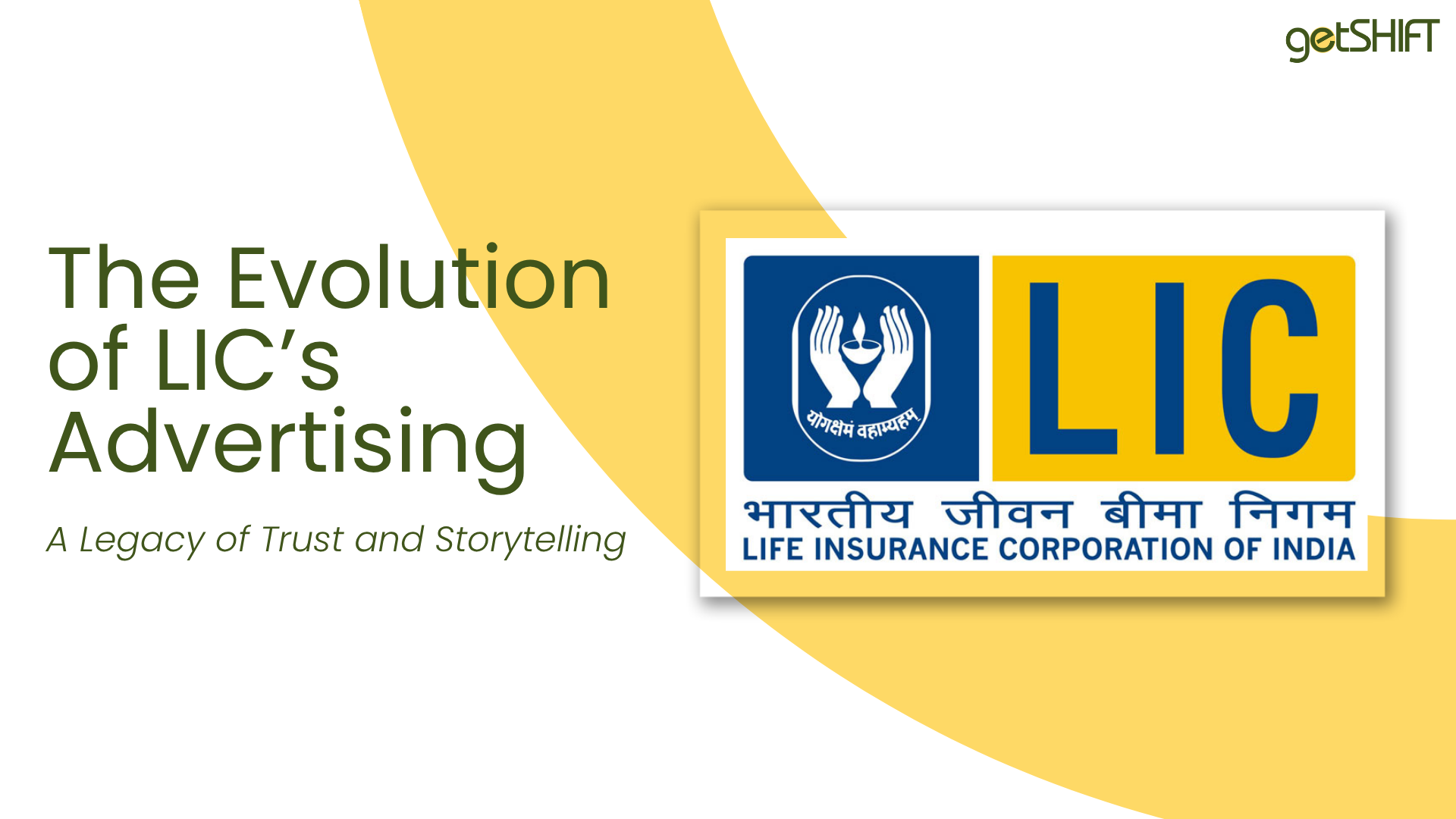Life Insurance Corporation of India (LIC) has been a part of Indian lives for as long as we can remember. It’s not just about policies or premiums—LIC’s advertising has consistently connected with people on a deeply emotional level. From the simplicity of print ads in the 1970s to sophisticated digital campaigns today, LIC has built a narrative that has evolved with the times while staying true to its roots.
Let’s explore how LIC’s advertising journey mirrors the emotions, aspirations, and fears of millions across generations.
1970s: Insurance as the Protector of Families
In the 1970s, LIC laid the foundation for its advertising legacy. At a time when life insurance was seen as an optional financial product, LIC positioned it as a shield for loved ones.
A memorable print ad from this era featured a young boy laughing, symbolically protected by two hands. It wasn’t just about selling policies—it was about ensuring families felt secure in a world full of uncertainties.
This emotional appeal worked. By the end of the decade, LIC held a commanding market share, becoming the go-to choice for Indian families.
1980s: The Power of Television
The 1980s marked a turning point as LIC embraced television advertising.
The iconic tagline, “Roti, Kapda, Makan aur Jeevan Bima,” resonated deeply with audiences. These campaigns highlighted the importance of life insurance as an essential part of securing basic needs.
Broadcasted on Doordarshan, these ads not only reached millions but also shaped public perception. By the late 1980s, surveys showed that nearly every Indian household associated life insurance with LIC.
1990s: Rising Competition, Renewed Strategies
The 1990s brought competition as private players entered the insurance sector. LIC responded by evolving its campaigns to focus on both trust and product differentiation.
Campaigns like “Na Chinta, Na Fikar” emphasized financial security while promoting policies like Jeevan Saral and Jeevan Anand. LIC’s storytelling became sharper, appealing to diverse demographics and maintaining its leadership despite the growing market competition.
2000s: Emotional Taglines That Became Mantras
By the 2000s, LIC introduced its most enduring tagline: “Zindagi Ke Saath Bhi, Zindagi Ke Baad Bhi.”

This era saw campaigns that didn’t just advertise policies but told real, emotional stories. From a widow managing her family’s future to a father securing his child’s education, these ads mirrored real-life scenarios that resonated across India.
One standout campaign from 2008, LIC Jeevan Tarang, creatively used a child receiving endless chocolates to illustrate consistent financial returns. It was a lighthearted yet effective way of communicating stability and foresight.
Why LIC’s Campaigns Work: The Emotional Connect
What makes LIC’s advertising so impactful? It’s the emotions. Nostalgia, joy, security—each campaign taps into universal human concerns.
For instance, a 2010 ad showed a father’s panic as he momentarily lost his daughter in a crowded market. The message was subtle but powerful: life’s uncertainties demand preparation.
In another campaign, LIC Jeevan Anand (2011), the focus shifted to young couples. The ad highlighted the joy of securing a future together, making life insurance feel accessible and relatable to a younger audience.
Lessons from LIC’s Advertising Legacy
There’s a lot to learn from LIC’s approach to advertising.
- Emotional Branding Works LIC’s campaigns show that storytelling isn’t just about selling a product—it’s about creating a bond. When you connect with your audience’s emotions, you build trust that lasts generations.
- Adapting to Change is Crucial From print ads to television and now digital-first campaigns, LIC has stayed ahead of the curve without losing its essence.
- Consistency Builds Trust “Zindagi Ke Saath Bhi, Zindagi Ke Baad Bhi” isn’t just a tagline. It’s a promise that has remained constant for over two decades, reinforcing LIC’s reliability.
- Cultural Relevance Matters By reflecting Indian values—family bonds, security, and aspirations—LIC’s campaigns resonate across demographics, making them universally relatable.
The Road Ahead: Balancing Tradition with Innovation
As LIC moves forward, the core principles of its advertising—emotional storytelling and cultural resonance—remain its strongest assets.
With over 250 million policyholders and more than 66% of the life insurance market, LIC isn’t just a company; it’s a part of India’s collective consciousness.
While the focus shifts toward digital platforms and data-driven marketing, the essence of LIC’s advertising is unlikely to change. It will continue to inspire trust, evoke emotions, and secure lives for generations to come.
“Zindagi Ke Saath Bhi, Zindagi Ke Baad Bhi.” It’s not just a tagline—it’s a legacy that defines LIC.
What’s your most memorable LIC ad? Let’s revisit the stories that shaped our understanding of trust, security, and hope.


